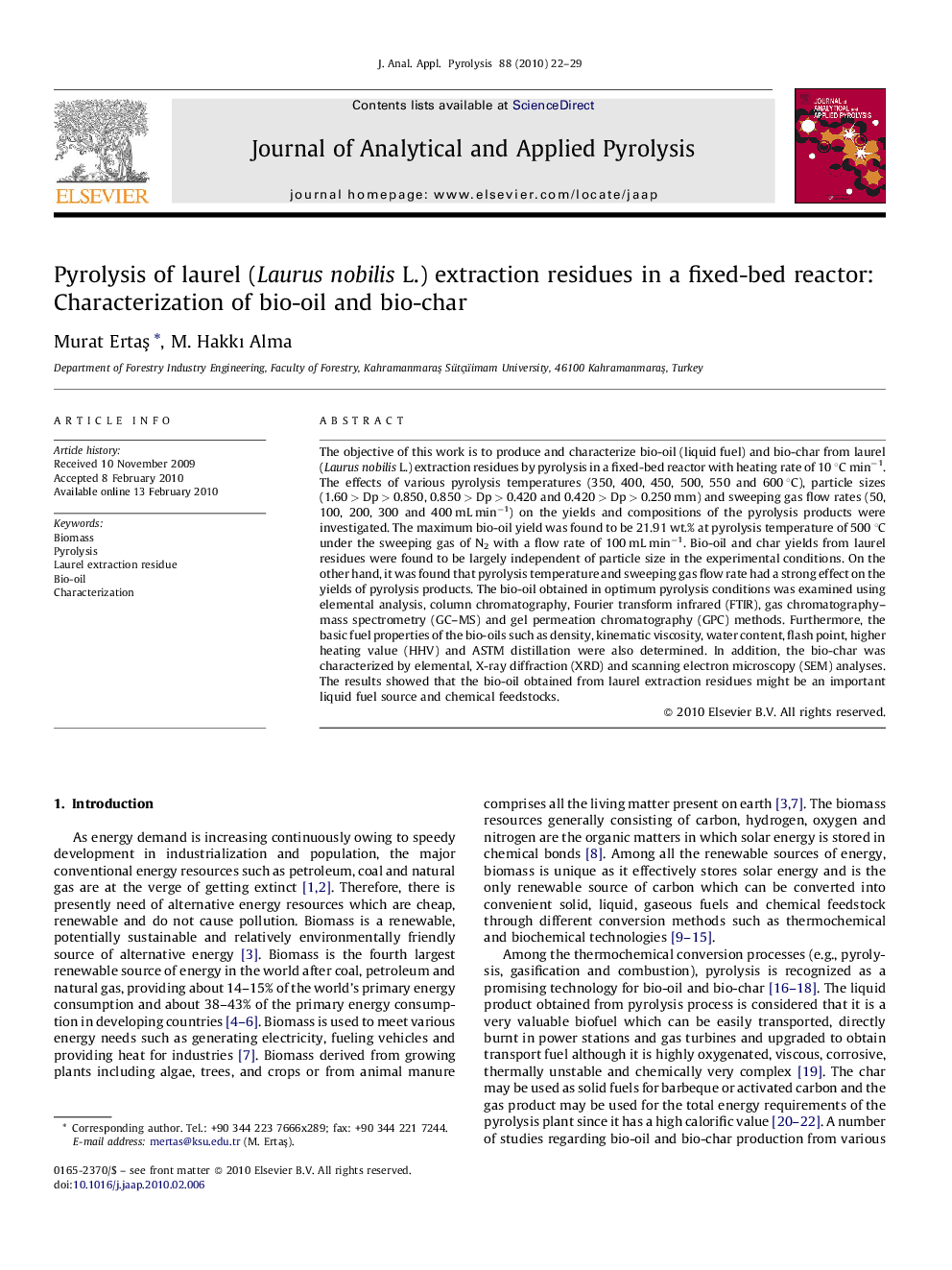| کد مقاله | کد نشریه | سال انتشار | مقاله انگلیسی | نسخه تمام متن |
|---|---|---|---|---|
| 1198525 | 964827 | 2010 | 8 صفحه PDF | دانلود رایگان |

The objective of this work is to produce and characterize bio-oil (liquid fuel) and bio-char from laurel (Laurus nobilis L.) extraction residues by pyrolysis in a fixed-bed reactor with heating rate of 10 °C min−1. The effects of various pyrolysis temperatures (350, 400, 450, 500, 550 and 600 °C), particle sizes (1.60 > Dp > 0.850, 0.850 > Dp > 0.420 and 0.420 > Dp > 0.250 mm) and sweeping gas flow rates (50, 100, 200, 300 and 400 mL min−1) on the yields and compositions of the pyrolysis products were investigated. The maximum bio-oil yield was found to be 21.91 wt.% at pyrolysis temperature of 500 °C under the sweeping gas of N2 with a flow rate of 100 mL min−1. Bio-oil and char yields from laurel residues were found to be largely independent of particle size in the experimental conditions. On the other hand, it was found that pyrolysis temperature and sweeping gas flow rate had a strong effect on the yields of pyrolysis products. The bio-oil obtained in optimum pyrolysis conditions was examined using elemental analysis, column chromatography, Fourier transform infrared (FTIR), gas chromatography–mass spectrometry (GC–MS) and gel permeation chromatography (GPC) methods. Furthermore, the basic fuel properties of the bio-oils such as density, kinematic viscosity, water content, flash point, higher heating value (HHV) and ASTM distillation were also determined. In addition, the bio-char was characterized by elemental, X-ray diffraction (XRD) and scanning electron microscopy (SEM) analyses. The results showed that the bio-oil obtained from laurel extraction residues might be an important liquid fuel source and chemical feedstocks.
Journal: Journal of Analytical and Applied Pyrolysis - Volume 88, Issue 1, May 2010, Pages 22–29